Lake Titicaca 1
Jul 17, 2023 22:39:59 #
MosheR
Loc: New York City
In 1986, my wife, our daughter and I spent a wonderful month in Japan. Then we returned home, turned around a few days later, and headed out for Bolivia. Our then twelve year old daughter had had it by then, so she spent the time we were in Bolivia with her grandmother in Brooklyn. The highlight of Bolivia, as far as we were concerned, was the time we spent on Lago (Lake) Titicaca.
Titicaca sounds like the kind of word a precocious but shy seven year old boy might use to insult a little girl in his second grade class because he secretly has a crush on her and didn't want anyone to know. But it is a real word and, in its native language of Quechua, which is the tongue generally spoken in the Andean region, it means “Rock of the Puma” which, if you think of it, actually sounds pretty good.
The lake that bears this majestic name, Lake Titicaca, possesses three qualities that make it stand out from just about all other lakes. First of all, by volume, it is the largest lake in South America as it sprawls across the border between Peru and Bolivia. Secondly, and of much importance, it is the highest navigable lake in the world. This means that any ship or boat can travel on it, as it is wide enough for them to turn around in, and deep enough to comfortably support them above the waterline. Finally, the feature that makes Lake Titicaca really stand out from all other lakes is its floating islands.
The generally accepted definition of an island is a body of land that is completely surrounded by water. An island can be very small, like the Manhattan I live on, or very large, like Greenland. And although any island, by virtue of the fact that it is surrounded by water almost appears to be floating, none of them really are. Islands are as firmly attached to Terra Firma as any other piece of land, except that most of their mass happens to be under water … either in the ocean, a river, or a lake. They’re not going anywhere in the near future except, perhaps, more deeply under water.
But many of the islands in Lake Titicaca are completely different, as they actually DO float, and have to be anchored to the lake’s bedrock by long ropes.
These islands of Lake Titicaca, known as the Uros Islands, are unique and constructed in a fascinating way. Unlike most islands, which are naturally formed land masses, the Uros Islands are artificial islands created by the indigenous Uros people of Peru. Obviously, not very much creativity was harnessed in the creation of their name.
The construction of these Islands involves the use of totora reeds, a type of buoyant plant that grows abundantly in the shallower areas along the shores of the lake. The Uros people use these reeds to build and maintain their floating islands.
First they gather large bunches of these reeds from, as just described, the lake's shores. The reeds have spongy stems filled with air, making them naturally buoyant and suitable for the desired purposes. Then they carefully construct the islands by layering the totora reeds in a crisscross pattern on the water's surface. The reeds are then tied together to create a stable and buoyant foundation. The totora of the islands require regular maintenance and replenishing so the Uros continually add new layers of reeds to the surface to compensate for the decomposition of the lower layers. This constant maintenance is essential to keep the islands afloat and habitable.
As already described, the islands are anchored to the lakebed using ropes and long stakes driven into the ground. This helps prevent the islands from drifting away from the force of the ever present wind and water currents.
Once the base of the island is established, the Uros construct their houses, communal spaces, and other structures using the same totora reeds. They also use the reeds for crafting boats, utensils, and handicrafts, which has fairly recently become one of their main sources of income.
The Floating Islands have been home to the Uros people for centuries, and their traditional lifestyle revolves around the lake and its resources. While tourism has introduced some changes to their way of life, especially regarding the selling of souvenirs, the Uros people still maintain many aspects of their unique cultural heritage, including their language and the construction and maintenance of those remarkable floating pieces of land.
Since these photos were taken nearly forty years ago, they naturally were not taken digitally and had to be scanned. I apologize in advance for their lack of quality, as I did the best I could with what I had in order to virtually take you to a place to which I am guessing most viewers of this post have never been.
Titicaca sounds like the kind of word a precocious but shy seven year old boy might use to insult a little girl in his second grade class because he secretly has a crush on her and didn't want anyone to know. But it is a real word and, in its native language of Quechua, which is the tongue generally spoken in the Andean region, it means “Rock of the Puma” which, if you think of it, actually sounds pretty good.
The lake that bears this majestic name, Lake Titicaca, possesses three qualities that make it stand out from just about all other lakes. First of all, by volume, it is the largest lake in South America as it sprawls across the border between Peru and Bolivia. Secondly, and of much importance, it is the highest navigable lake in the world. This means that any ship or boat can travel on it, as it is wide enough for them to turn around in, and deep enough to comfortably support them above the waterline. Finally, the feature that makes Lake Titicaca really stand out from all other lakes is its floating islands.
The generally accepted definition of an island is a body of land that is completely surrounded by water. An island can be very small, like the Manhattan I live on, or very large, like Greenland. And although any island, by virtue of the fact that it is surrounded by water almost appears to be floating, none of them really are. Islands are as firmly attached to Terra Firma as any other piece of land, except that most of their mass happens to be under water … either in the ocean, a river, or a lake. They’re not going anywhere in the near future except, perhaps, more deeply under water.
But many of the islands in Lake Titicaca are completely different, as they actually DO float, and have to be anchored to the lake’s bedrock by long ropes.
These islands of Lake Titicaca, known as the Uros Islands, are unique and constructed in a fascinating way. Unlike most islands, which are naturally formed land masses, the Uros Islands are artificial islands created by the indigenous Uros people of Peru. Obviously, not very much creativity was harnessed in the creation of their name.
The construction of these Islands involves the use of totora reeds, a type of buoyant plant that grows abundantly in the shallower areas along the shores of the lake. The Uros people use these reeds to build and maintain their floating islands.
First they gather large bunches of these reeds from, as just described, the lake's shores. The reeds have spongy stems filled with air, making them naturally buoyant and suitable for the desired purposes. Then they carefully construct the islands by layering the totora reeds in a crisscross pattern on the water's surface. The reeds are then tied together to create a stable and buoyant foundation. The totora of the islands require regular maintenance and replenishing so the Uros continually add new layers of reeds to the surface to compensate for the decomposition of the lower layers. This constant maintenance is essential to keep the islands afloat and habitable.
As already described, the islands are anchored to the lakebed using ropes and long stakes driven into the ground. This helps prevent the islands from drifting away from the force of the ever present wind and water currents.
Once the base of the island is established, the Uros construct their houses, communal spaces, and other structures using the same totora reeds. They also use the reeds for crafting boats, utensils, and handicrafts, which has fairly recently become one of their main sources of income.
The Floating Islands have been home to the Uros people for centuries, and their traditional lifestyle revolves around the lake and its resources. While tourism has introduced some changes to their way of life, especially regarding the selling of souvenirs, the Uros people still maintain many aspects of their unique cultural heritage, including their language and the construction and maintenance of those remarkable floating pieces of land.
Since these photos were taken nearly forty years ago, they naturally were not taken digitally and had to be scanned. I apologize in advance for their lack of quality, as I did the best I could with what I had in order to virtually take you to a place to which I am guessing most viewers of this post have never been.
The sign states that the lake is 3809 meters above sea level, which is more than 12,000 feet high. That's more than two Denvers, one on top of the other. This pic was taken at the lake's shore in Copacabana, Bolivia.
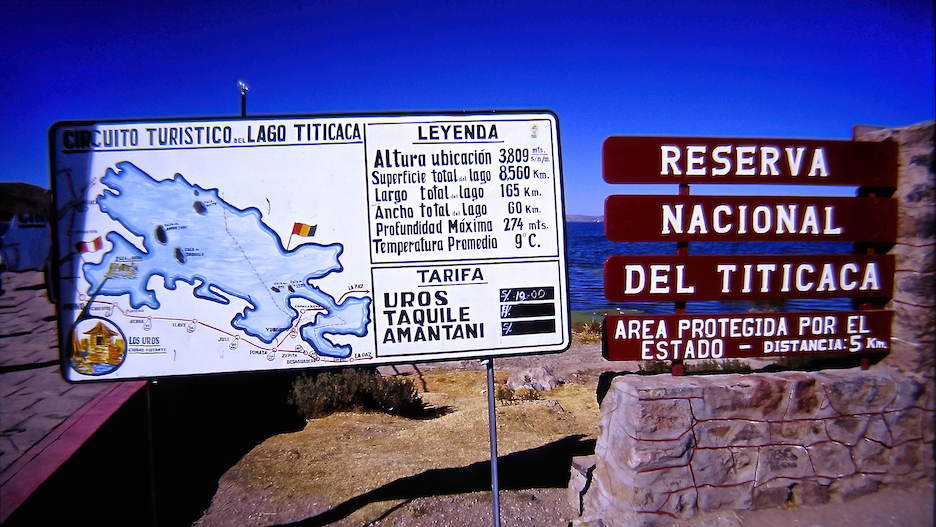
The islands in general are called Uros. This one in particular, a very small one, is also called Uros. (I guess that's kind of like New York, New York.) It was quite bouncy to walk on and, when you stood still, you began to sink into it.
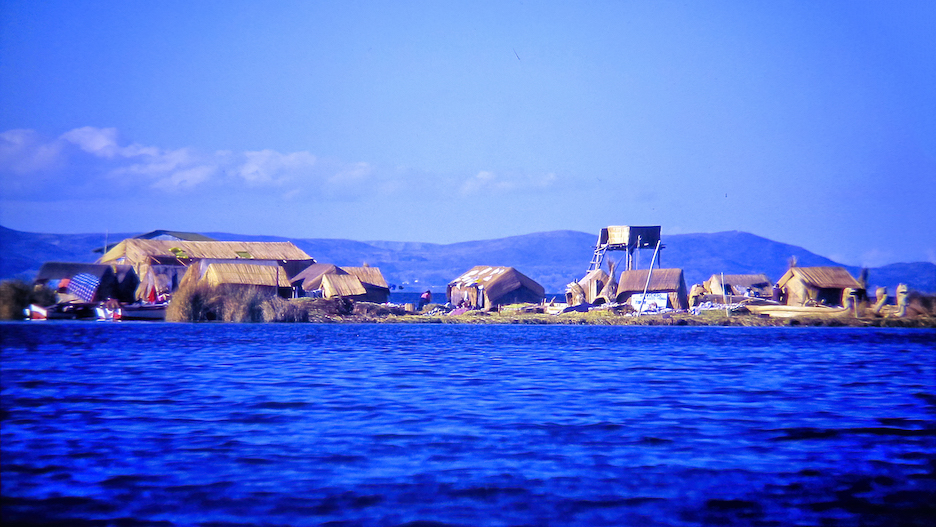
A pair of dragon headed reed boats. You can also see them at the far right in the above photo.
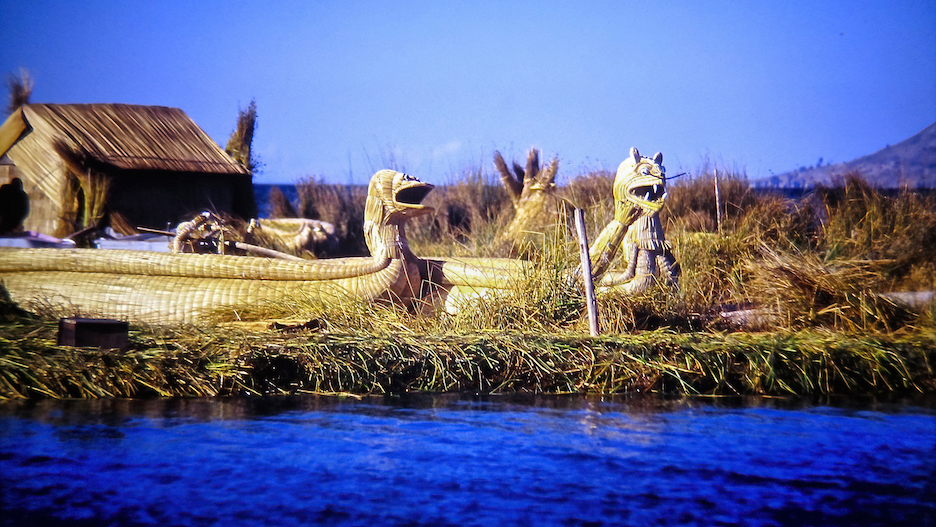
A couple of Uro children. The locals know how to stand in place without sinking in; a skill my wie and I did not have time to develope.
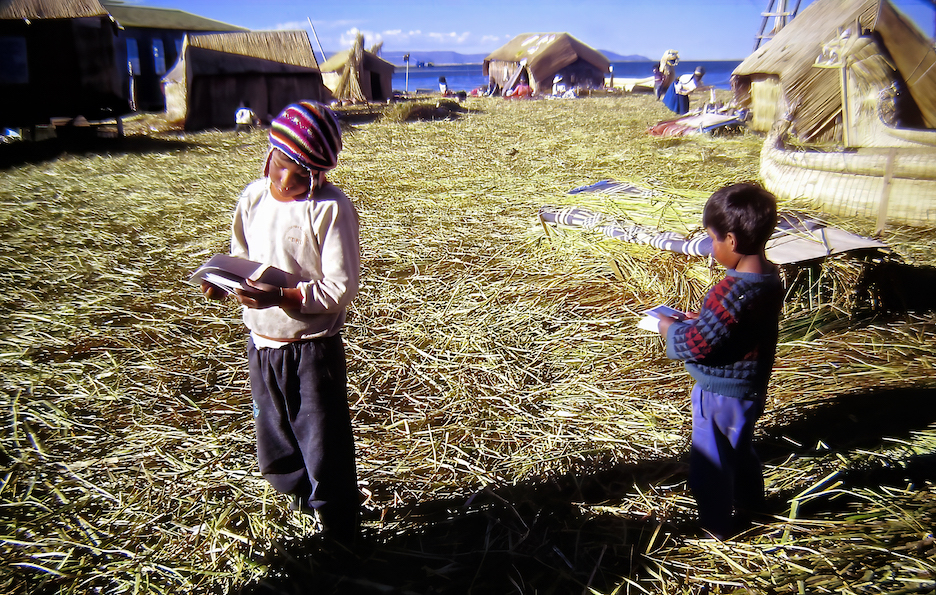
Most of the tourists the sold this stuff to back in '86 were either from other parts of Peru or Bolivia. Not all that many Americans or Europeans back then, although I imagine there are plenty now.
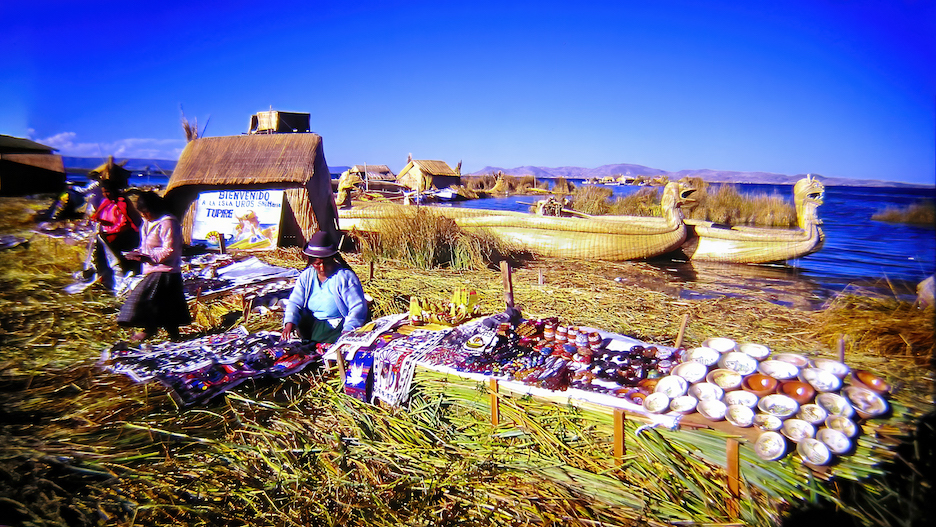
More of the same. All the stuff they sold back then was made locally, and by hand.
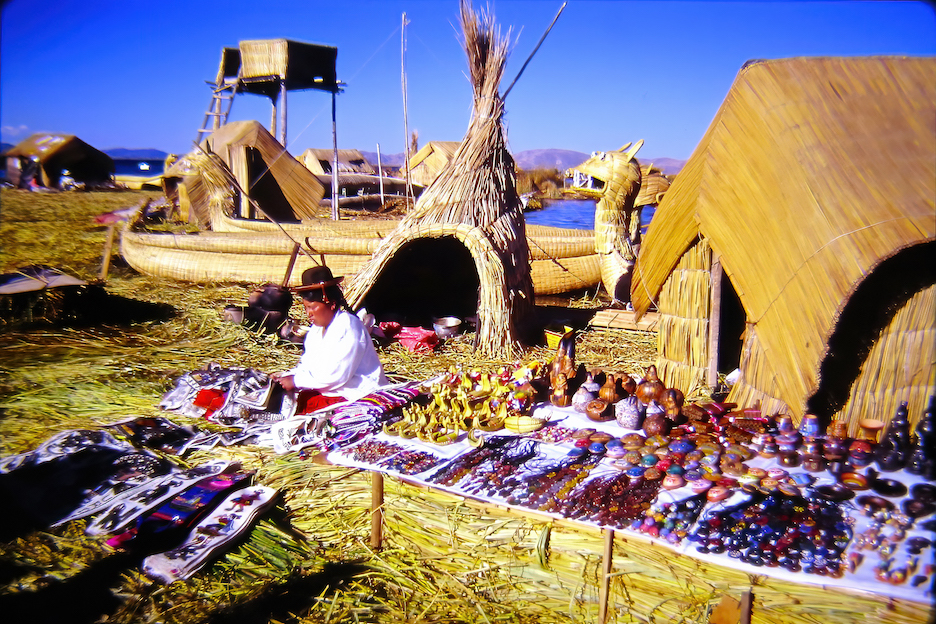
Same Uro lady as above.
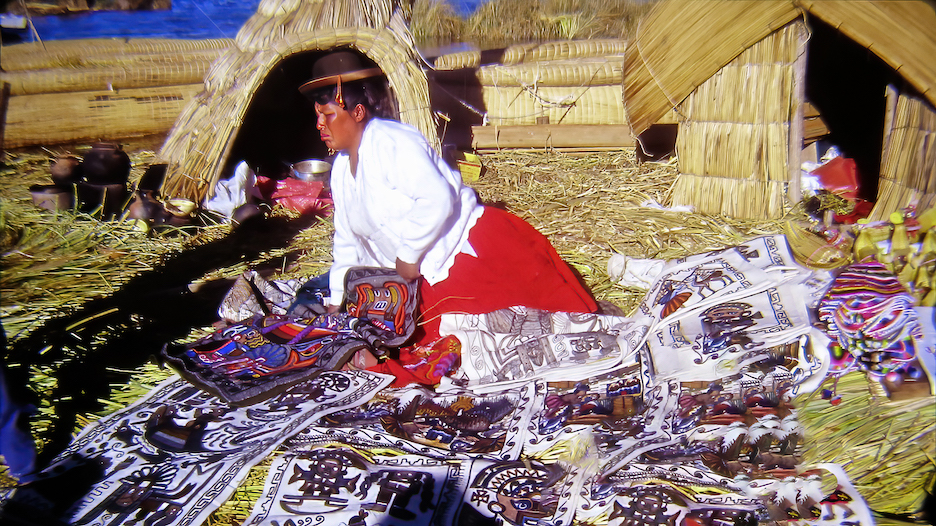
The Andes in the background don't appear to be all that high in this photo, but remember that we're already more than 12,000 feet up, and those mountains are considerably higher.
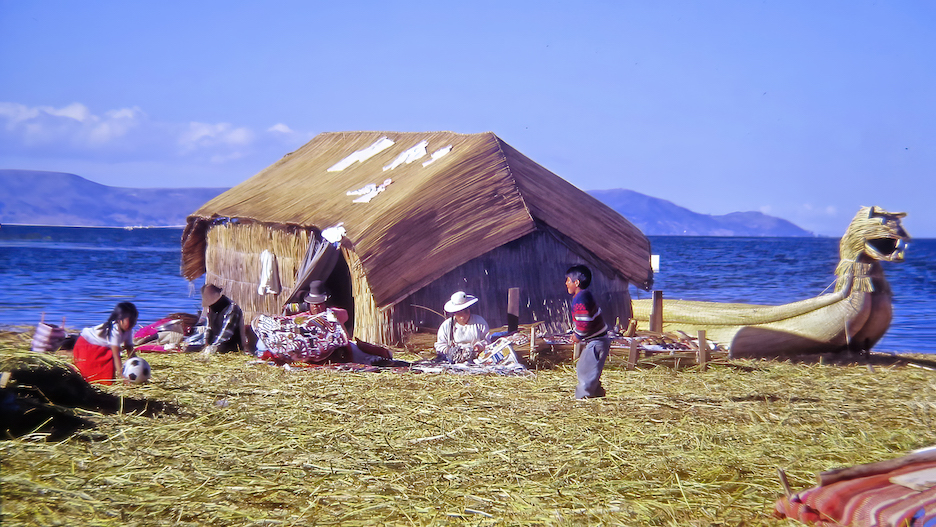
Jul 17, 2023 22:53:52 #
Jul 17, 2023 23:00:29 #
Jul 17, 2023 23:19:23 #
Jul 17, 2023 23:19:37 #
Jul 18, 2023 05:44:50 #
Jul 18, 2023 05:52:43 #
MosheR wrote:
In 1986, my wife, our daughter and I spent a wonde... (show quote)
Nice set ! well recorded and memories to cherish. This is a fresh water lake too !
Jul 18, 2023 07:05:51 #
Morry
Loc: Palm Springs, CA
The made out of straw like looking material are their version of small boats. Thor Hydal (spelling may be wrong) made his Kon Tiki Expedition (the book) boats out of this same material at a similar location on this same lake many generations ago. I was in this area passing through in 1988 having arrived by the train that follows the Andes high up for much of the South American continent. Very interesting place. Thanks for sharing.
Jul 18, 2023 08:08:25 #
MosheR
Loc: New York City
venkatesh_eng wrote:
Nice set ! well recorded and memories to cherish. This is a fresh water lake too !
Thank you. And as I should have mentioned, you're correct. It is a fresh water lake.
Jul 18, 2023 08:17:24 #
MosheR
Loc: New York City
Morry wrote:
The made out of straw like looking material are their version of small boats. Thor Hydal (spelling may be wrong) made his Kon Tiki Expedition (the book) boats out of this same material at a similar location on this same lake many generations ago. I was in this area passing through in 1988 having arrived by the train that follows the Andes high up for much of the South American continent. Very interesting place. Thanks for sharing.
Sorry, but Thor Heyerdahl made his raft, the Kon Tiki out of Balsa logs. I once rode on a similar, but much smaller boat in Ecuador. The logs are very light, and therefore float very easily. I saw the Kon Tiki in a museum in Oslo, and have visited the island of Fatu Hiva in Polynesia where it landed back in the late forties.
Besides the book, Heyerdahl also made an Academy Award winning documentary of his expedition. They brought along a camera and filmed everything. I'm sure it's available somewhere.
Anyway, thanks for looking and commenting. I really appreciate it.
Jul 18, 2023 08:44:37 #
Jul 18, 2023 08:56:41 #
StanMac
Loc: Tennessee
Excellent documentary images. Creating and maintaining those Uro islands appears to be quite an investment in manhours and makes me wonder what advantage they offer the people over establishing their housing/villages on land next to the lake. They craft the boats to navigate the lake, why do they need to also live, literally, on the lake? Is it a defensive strategy for hostile tribes?
Stan
Stan
Jul 18, 2023 08:58:30 #
Jul 18, 2023 09:19:48 #
Wow. Wow..Wow! Not only is your narrative, again, so interesting and informative, but you made your "old " pictures as beautiful as your more current ones! Amazing!
Now on to #2...
Now on to #2...
Jul 18, 2023 09:31:18 #
MosheR
Loc: New York City
Bubbee wrote:
Wow. Wow..Wow! Not only is your narrative, again, so interesting and informative, but you made your "old " pictures as beautiful as your more current ones! Amazing!
Now on to #2...
Now on to #2...
Thank you so much, Bubbee. Glad you enjoyed them. Scanning old slides brings back great memories, even if the quality of the scans is not always quite up to par.
If you want to reply, then register here. Registration is free and your account is created instantly, so you can post right away.





